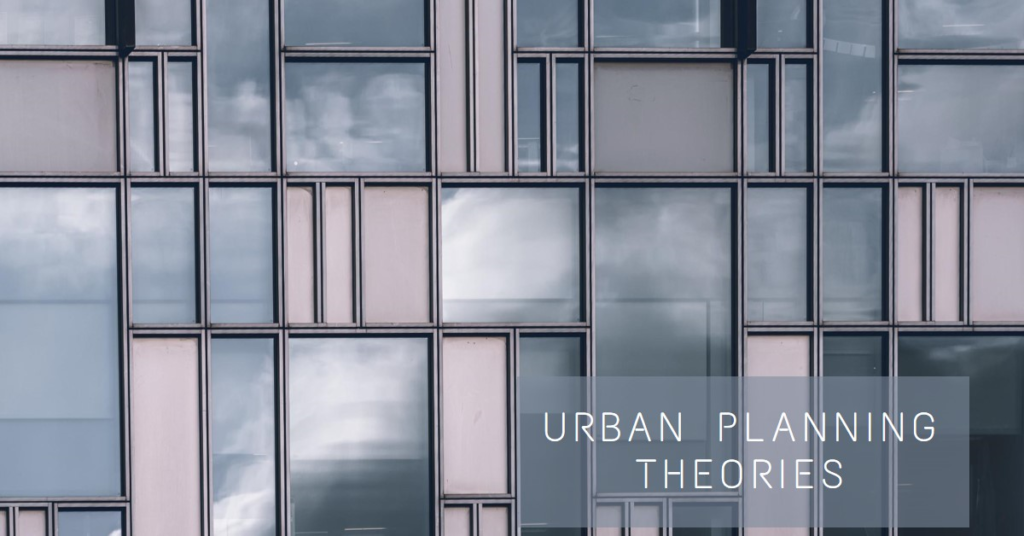
Table of Contents
- Introduction:
- The Genesis of Urban Planning:
- The Garden City Movement: A Vision of Green
- Zoning: Dividing Spaces for Harmony
- The Radiant City: Le Corbusier’s Vertical Vision
- The Concept of New Urbanism:
- Transit-Oriented Development: Integrating Mobility
- Smart Growth: Planning for Sustainability
- The Role of Participatory Planning:
- The Future of Urban Planning Theories:
- Conclusion: Embracing Comprehensive Urban Planning
Introduction:
Urban planning theories form the foundation for designing and managing cities. They guide planners in creating spaces that are functional, sustainable, and harmonious. In this blog post, we will explore the key concepts and principles of urban planning theories, delving into their significance and practical applications.
The Genesis of Urban Planning:
Urban planning theories have evolved significantly over time. Initially, planning focused on the basic need for order and sanitation. Early theories emerged in response to the chaotic growth of cities during the Industrial Revolution.
The need for organized urban spaces led to the development of the grid system, which aimed to simplify navigation and land distribution. However, as cities grew, planners recognized the limitations of this approach, prompting the evolution of more sophisticated theories.
The Garden City Movement: A Vision of Green
Ebenezer Howard’s Garden City Movement revolutionized urban planning by integrating green spaces into urban design. This theory proposed self-contained communities surrounded by greenbelts, balancing urban and rural environments.
The Garden City Movement emphasized the importance of accessible green spaces, promoting healthier lifestyles and reducing urban congestion. Its principles continue to influence modern urban planning, particularly in the development of eco-friendly and sustainable cities.
Zoning: Dividing Spaces for Harmony
Zoning is a fundamental urban planning tool used to separate different land uses, such as residential, commercial, and industrial areas. This theory aims to reduce conflicts between incompatible uses and ensure orderly development.
Through zoning, planners can control the density of development, manage traffic flow, and protect the environment. However, rigid zoning can sometimes lead to urban sprawl and segregation, necessitating more flexible and inclusive approaches.
The Radiant City: Le Corbusier’s Vertical Vision
Le Corbusier’s Radiant City theory proposed high-density, high-rise living as a solution to urban problems. He envisioned cities with towering residential blocks surrounded by vast open spaces, aiming to maximize efficiency and minimize land use.
Although the Radiant City concept was revolutionary, it faced criticism for promoting monotonous and impersonal urban landscapes. Nevertheless, it influenced the development of modernist architecture and urban design, emphasizing the need for balance between density and livability.
The Concept of New Urbanism:
New Urbanism emerged as a response to the shortcomings of modernist planning theories. It advocates for walkable neighborhoods, mixed-use development, and community-oriented spaces. This theory emphasizes human-scale design and the importance of social interactions in urban environments.
New Urbanism seeks to create vibrant, sustainable communities that foster a sense of belonging and reduce dependence on automobiles. Its principles are reflected in many contemporary urban developments, promoting more inclusive and dynamic cities.
Transit-Oriented Development: Integrating Mobility
Transit-Oriented Development (TOD) focuses on creating compact, mixed-use communities centered around public transportation hubs. This theory aims to reduce traffic congestion, lower greenhouse gas emissions, and enhance accessibility.
By integrating residential, commercial, and recreational spaces within walking distance of transit stations, TOD encourages sustainable urban growth. This approach supports the development of efficient and livable cities, highlighting the crucial role of transportation in urban planning.


Smart Growth: Planning for Sustainability
Smart Growth is a planning theory that promotes sustainable development by focusing on efficient land use, environmental conservation, and community well-being. It advocates for compact, walkable communities, diverse housing options, and the preservation of natural resources.
This theory aims to curb urban sprawl and create more resilient cities. By prioritizing smart growth principles, planners can enhance quality of life, reduce environmental impact, and ensure long-term sustainability.
The Role of Participatory Planning:
Participatory planning involves engaging the community in the planning process, ensuring that the voices of residents are heard and considered. This theory emphasizes transparency, collaboration, and inclusivity in urban development.
By involving stakeholders in decision-making, participatory planning fosters a sense of ownership and accountability. It helps create plans that reflect the needs and aspirations of the community, leading to more equitable and successful urban outcomes.
The Future of Urban Planning Theories:
Urban planning theories continue to evolve in response to changing societal needs and environmental challenges. Emerging concepts such as resilience planning, which focuses on preparing cities for climate change and natural disasters, are gaining traction.
The integration of technology and data analytics in urban planning is also transforming how cities are designed and managed. Smart cities, characterized by interconnected systems and real-time data, represent the future of urban development, promising greater efficiency, sustainability, and quality of life.
Conclusion: Embracing Comprehensive Urban Planning
Understanding the basics of urban planning theories is crucial for creating cities that are not only functional but also vibrant and sustainable. By embracing a diverse range of planning principles, from the Garden City Movement to Smart Growth, planners can address the complex challenges of urbanization.
Incorporating community participation and leveraging technological advancements will further enhance the effectiveness of urban planning. As we look to the future, it is essential to continue exploring and refining these theories to build cities that meet the needs of current and future generations.



